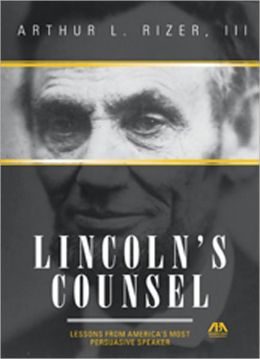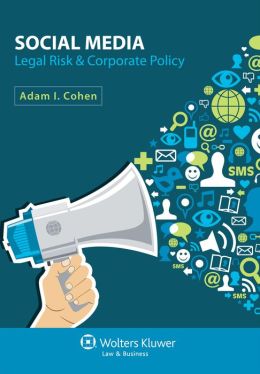
As the August 2nd deadline looms, the debate continues to rage over the federal government’s fiscal health. If you would like to learn more about this issue, the BLS Library has several resources you can consult.
Alan J. Auerbach & William G. Gale, Brookings Inst., Tempting Fate the Federal Budget Outlook (2011).
Excerpt taken from the report’s abstract:
We present new estimates of the budget outlook, based on the latest projections from the Congressional Budget Office and the Medicare and Social Security Trustee reports. The medium-term and long-term budget outlook have not changed appreciably since last year. Under reasonable assumptions, the federal government is likely to face deficits in excess of 6 percent of GDP by late in the decade, even with a strong economy, with the debt-GDP ratio reaching 98 percent by 2021. The long-term budget outlook is sensitive to assumptions about how health care spending will respond to recent legislation. However, even under the most optimistic assumptions regarding health care spending, the most likely estimate suggests a long-term fiscal gap of between 6 and 7 percent of GDP. Policy makers and the public will eventually be forced to address these issues, but addressing them sooner rather than waiting until a full-blown crisis hits would allow for more reasonable and gradual adjustments.
U.S. Cong. Budget Office, Reducing the Deficit Spending and Revenue Options (2011).
Excerpt taken from the report’s preface:
The report begins with an introductory chapter that describes the current budgetary picture and the uses and limitations of this volume. Chapters 2 and 3 present options that would reduce mandatory and discretionary spending, respectively. Chapter 4 contains options that would increase revenues from various kinds of taxes and fees. The options discussed in this report stem from a variety of sources, including legislative proposals, various Administrations’ budget proposals, Congressional staff, other government entities, and private groups. The options are intended to reflect a range of possibilities rather than to provide a ranking of priorities or a comprehensive list. The inclusion or exclusion of a particular policy change does not represent an endorsement or rejection by CBO. In keeping with CBO’s mandate to provide objective, impartial analysis, this report makes no recommendations.
U.S. Nat’l Comm’n on Fiscal Responsibility & Reform, U.S. White House Office, The Moment of Truth Report of the National Commission on Fiscal Responsibility & Reform (2010).
Excerpt taken from the report’s preamble:
As members of the National Commission on Fiscal Responsibility and Reform, we spent the past eight months studying the same cold, hard facts. Together, we have reached these unavoidable conclusions: The problem is real. The solution will be painful. There is no easy way out. Everything must be on the table. And Washington must lead.
We come from different backgrounds, represent different regions, and belong to different parties, but we share a common belief that America’s long-term fiscal gap is unsustainable and, if left unchecked, will see our children and grandchildren living in a poorer, weaker nation. In the words of Senator Tom Coburn, “We keep kicking the can down the road, and splashing the soup all over our grandchildren.” Every modest sacrifice we refuse to make today only forces far greater sacrifices of hope and opportunity upon the next generation.
Daniel N. Shaviro, Do Deficits Matter? (1997).
Review from the Library Journal:
Federal budget deficits have long fueled public-policy debates. Law professor Shaviro traces these debates back several centuries, showing how they developed. Then, considering ways in which the deficit might matter, he presents the case both for and against its impact. Deficits have macroeconomic and generational influences, he concludes, but it is not clear whether these influences are positive or negative. Contrary to much commonly held opinion, Shaviro does not view deficits as necessarily bad. He argues that the deficit, a cash accrual measure subject to manipulation, is a flawed indicator of budgetary effects. He also discusses Social Security and the value of a balanced-budget amendment. The author’s background as a legislation attorney shows in his insightful analysis of political gamesmanship and the unintended consequences of legislation. Shaviro’s history, economics, and political analysis are right on the mark. Copyright © 1997, Reed Business Information Inc.
David P. Calleo, The Bankrupting of America: How the Federal Budget Is Impoverishing the Nation (1992).
Review from Kirkus Reviews:
An exacting audit by Calleo (European Studies/Johns Hopkins) of the federal government’s mismanagement of financial affairs, and of the resultant risks. Drawing on Washington’s own data, Calleo explores how and why budget deficits have grown to levels that make them engines of national decline. He sheds light on a wealth of ad rem subjects- -e.g., changes in spending priorities over the 1950-90 period; exploitation of the dollar’s international stature (i.e., borrowing abroad to avoid domestic adjustments); manipulative monetary policies (which relied on inflation to underwrite fiscal shortfalls); and the grave implications of current fiscal trends in the context of likely demographic, geopolitical, and socioeconomic developments. The author also puts the country’s income/outgo situation in perspective by comparing its not altogether analogous expenditure patterns after WW II with those of France and Germany. Calleo concludes that inefficiency and waste rather than excessively self-indulgent consumption are root causes of US problems, and he decries unregulated markets that, in his view, have proved wholly inadequate substitutes for a stable currency and allied common goods. While unpersuaded that a peace dividend will make any real contribution to genuine prosperity, Calleo remains sanguine on the prospects for US renewal. His remedial prescriptions, however, are appreciably less specific than his detailed diagnosis. If nothing else, though, Calleo’s principled plea for a more rational balance between the power to govern and the capacity of special-interest groups to obstruct merits consideration, as does his unabashed appeal that the electorate and its leaders embrace the generous, visionary ideals that long made America a tower of economic strength and a beacon of hope. A challenging, fully documented tract addressing the overleveraged and frequently dysfunctional state of the union. The text brims with helpful tabular material. — Copyright ©1992, Kirkus Associates, LP.


 One title of practical interest to law students is
One title of practical interest to law students is 
 The Gettysburg Address still matters today. Brooklyn Law School Library’s copy of
The Gettysburg Address still matters today. Brooklyn Law School Library’s copy of  High school students are not the only ones who need to exercise discretion when using social media. Touro Law School Assistant Professor of Law Jonathan Ezor’s PowerPoint presentation
High school students are not the only ones who need to exercise discretion when using social media. Touro Law School Assistant Professor of Law Jonathan Ezor’s PowerPoint presentation 





